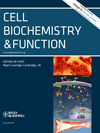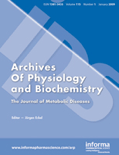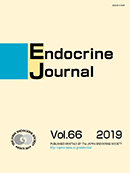
PPAR Research
Scope & Guideline
Empowering Knowledge in PPAR Biology
Introduction
Aims and Scopes
- Metabolic Regulation:
Research on how PPARs influence lipid metabolism, glucose homeostasis, and energy expenditure, highlighting their roles in obesity, diabetes, and metabolic syndrome. - Cancer Biology:
Exploration of the role of PPARs in cancer progression, chemoresistance, and potential therapeutic targets for various cancers, including breast, colon, and hypopharyngeal cancers. - Inflammation and Oxidative Stress:
Studies investigating the impact of PPAR activation on inflammatory pathways and oxidative stress, with a focus on their implications for chronic diseases and tissue repair. - Epigenetic Regulation:
Research on the epigenetic mechanisms that regulate PPAR expression and activity, especially during adipogenesis and other developmental processes. - Therapeutic Applications:
Development of novel therapeutic strategies targeting PPAR signaling pathways, including the use of natural compounds and synthetic agonists in disease treatment.
Trending and Emerging
- PPARs in Cancer Chemosensitivity:
An increasing number of studies are focusing on the role of PPARs in mediating responses to chemotherapy, suggesting that modulating PPAR activity could enhance treatment efficacy in cancer patients. - Noncoding RNAs and PPAR Interactions:
Emerging research is investigating the role of noncoding RNAs in regulating PPAR expression and function, indicating a growing interest in the regulatory networks involving PPARs. - PPARs and Gut Microbiota:
There is a noticeable trend towards exploring the interactions between PPAR signaling and gut microbiota, reflecting an interest in how these relationships impact metabolic health and disease. - Natural Compounds as PPAR Modulators:
The exploration of natural products and phytochemicals as PPAR agonists or antagonists is gaining traction, particularly for their potential therapeutic applications in metabolic and inflammatory diseases. - PPARs in Neuroprotection and Neuropathic Pain:
Research is increasingly focusing on the role of PPARs in neurological conditions, particularly their protective effects against neuroinflammation and pain, which may open new avenues for treatment.
Declining or Waning
- Basic Mechanistic Studies:
There appears to be a waning interest in purely mechanistic studies of PPARs without translational implications, as the field shifts towards more clinically relevant research. - Single-Pathway Investigations:
Research focusing solely on a single PPAR pathway without considering cross-talk with other pathways has become less common, reflecting a broader interest in integrative approaches. - Animal Models for Basic Research:
The use of traditional animal models for basic research on PPAR functions is declining, likely due to the rise of in vitro studies and patient-derived models that provide more direct relevance to human diseases.
Similar Journals

JOURNAL OF MOLECULAR MEDICINE-JMM
Connecting Molecular Biology to Clinical Applications.JOURNAL OF MOLECULAR MEDICINE (JMM) is a premier publication dedicated to advancing the field of molecular medicine, encompassing critical areas such as drug discovery, genetics, and biochemistry. Published by Springer Heidelberg in Germany, this influential journal has established its significance within the academic community, achieving an impressive Q1 ranking across multiple categories as of 2023, including Drug Discovery, Clinical Genetics, and Molecular Medicine. With a focus on publishing high-quality research and novel insights, JMM appeals to a diverse audience of researchers, professionals, and students passionate about the molecular underpinnings of health and disease. The journal, which has seen a convergence of relevant research spanning from 1976 to 2024, is instrumental in showcasing groundbreaking studies that push the boundaries of knowledge in molecular therapeutics and biomedical science. While it does not offer open access, the rigor of its peer-reviewed content ensures that each publication is a valuable addition to the scientific discourse surrounding molecular medicine. For comprehensive studies and reviews that highlight the intersection of molecular biology and clinical application, look no further than JOURNAL OF MOLECULAR MEDICINE.

BIOCHEMICAL JOURNAL
Illuminating the Path of Molecular DiscoveryBIOCHEMICAL JOURNAL, published by Portland Press Ltd, stands as a leading publication in the fields of Biochemistry, Cell Biology, and Molecular Biology, reflecting a commitment to advancing scientific knowledge since its inception in 1945. With a distinguished Q1 ranking across these categories and impressive Scopus rankings, the journal serves as an invaluable resource for researchers, professionals, and students alike, facilitating critical discoveries and innovative research practices. Although not currently offering open access, the journal provides a platform for high-quality peer-reviewed articles, ensuring rigorous standards in the dissemination of biochemical research. Spanning over seven decades and continuing through to 2024, the BIOCHEMICAL JOURNAL fosters an environment where cutting-edge biochemical research thrives, supporting the global scientific community's efforts to address complex biological questions and enhance our understanding of fundamental cellular processes.

CELL BIOCHEMISTRY AND FUNCTION
Unraveling Cellular Mysteries Through Innovative ResearchCELL BIOCHEMISTRY AND FUNCTION is a prominent journal dedicated to disseminating high-quality research in the fields of biochemistry, cell biology, and clinical biochemistry. Published by Wiley, this journal has maintained an esteemed reputation since its inception in 1983, bridging decades of scientific advancements and contributions until 2024. With ISSN 0263-6484 and E-ISSN 1099-0844, it serves as a vital resource for researchers, professionals, and students. The journal is classified in quartiles Q2 and Q3 across various categories in the 2023 rankings, showcasing its impact and significance within the academic community. Highlighting essential studies in medicinal biochemistry and cellular functionalities, CELL BIOCHEMISTRY AND FUNCTION not only presents cutting-edge research but also encourages interdisciplinary collaboration, thereby advancing the understanding of biochemical processes that underlie living systems. With no open access currently available, readers are encouraged to access articles through institutional subscriptions or individual purchases, ensuring exclusive engagement with the latest scientific findings in this dynamic field.

ARCHIVES OF PHYSIOLOGY AND BIOCHEMISTRY
Advancing the Frontiers of Physiology and BiochemistryArchives of Physiology and Biochemistry, published by Taylor & Francis Ltd, is a renowned journal that has been pivotal in advancing knowledge and research in the fields of physiology and biochemistry since its inception. With an impact factor reflective of its significant contributions, this journal is categorized in Q2 in Medicine (miscellaneous) and Q3 in Physiology, underscoring its relevance and scholarly impact within the scientific community. The journal publishes original research articles, review papers, and innovative methodologies that explore the intricate relationships between physiological functions and biochemical processes. With its commitment to fostering scientific discourse, the Archives of Physiology and Biochemistry serves as an essential resource for researchers, professionals, and students alike, providing insights and evidence that drive forward the frontiers of medical and physiological science. The journal is accessible in both print and online formats, ensuring that critical research reaches a wide audience.

ENDOCRINE JOURNAL
Shedding light on the pathophysiology of endocrine disorders.ENDOCRINE JOURNAL, published by the Japan Endocrine Society, is a pivotal resource for researchers and professionals in the field of endocrinology, diabetes, and metabolism. With a long history dating back to 1954, this journal encompasses a comprehensive range of topics including hormonal regulation, pathophysiology of endocrine diseases, and innovative therapeutic approaches. Despite its classification as open access, the journal remains a beacon of knowledge, with impressive rankings—Q2 in Endocrinology, Diabetes and Metabolism and Q3 in Endocrinology for 2023—ensuring it is a respected source in the academic community. It serves as a critical platform for the dissemination of cutting-edge research, encouraging collaboration and facilitating advancements in understanding complex endocrine disorders. By subscribing to this journal, researchers and students gain access to seminal studies, clinical insights, and a wealth of information that drives this vital field forward.

BioImpacts
Fostering interdisciplinary collaboration for impactful research.BioImpacts, an esteemed journal published by Tabriz University of Medical Sciences & Health Services, is a prominent platform dedicated to advancing the fields of Biochemistry, Genetics, Molecular Biology, Medicine, and Pharmaceutical Science. Established in 2011, this Open Access journal ensures that vital research findings are freely accessible to the global academic community. With an impressive presence in the Scopus database, BioImpacts currently holds a Q2 quartile ranking in its respective categories, reflecting its contribution to scientific discourse and its importance as a critical resource for researchers and practitioners alike. The journal's dynamic scope encompasses a wide range of topics, highlighting innovative research that addresses contemporary challenges in health and disease. Operating out of Tabriz, Iran, BioImpacts is committed to fostering interdisciplinary collaboration and knowledge dissemination through their dedicated publication efforts, which span from 2011 to 2024. Researchers, professionals, and students are encouraged to explore the rich content and cutting-edge studies presented in this journal, making it an indispensable resource in the scientific community.

IUBMB LIFE
Catalyzing Breakthroughs in Biochemical KnowledgeIUBMB LIFE is a prestigious, peer-reviewed journal published by WILEY, dedicated to advancing the fields of biochemistry, molecular biology, and cell biology. With an impressive impact factor and consistently ranked in the Q1 and Q2 categories across multiple relevant disciplines—including Biochemistry, Genetics, and Clinical Biochemistry—this journal has established itself as a leading platform for disseminating innovative research and critical reviews that propel scientific discovery. The journal spans a converged publication period from 1999 to 2024, providing comprehensive insights into the dynamic landscape of biochemical research. Researchers, professionals, and students alike are invited to explore its Open Access options, ensuring that groundbreaking studies are accessible to a global audience. As it continues to shape the future of life sciences, IUBMB LIFE remains a vital resource for those seeking to enrich their understanding and contribute to these rapidly evolving fields.

BIOFACTORS
Exploring the Nexus of Science and Clinical PracticeBIOFACTORS, an esteemed journal published by Wiley, serves as a pivotal resource in the fields of Biochemistry, Clinical Biochemistry, and Molecular Medicine. With ISSN 0951-6433 and E-ISSN 1872-8081, the journal has established its reputation since its inception in 1988, showcasing a rich history of scientific inquiry and innovation. Recognized for its high academic standards, it currently holds a Q1 ranking in key categories, including Biochemistry and Medicine (miscellaneous), and ranks in the top 10% for Clinical Biochemistry according to Scopus metrics, reflecting its impact and influence in the scientific community. Although it does not offer Open Access, BIOFACTORS provides researchers the opportunity to publish and disseminate high-quality studies that advance our understanding of biological factors and their clinical implications. The journal actively encourages contributions that bridge the gap between laboratory findings and clinical applications, making it a vital platform for both seasoned researchers and emerging scholars in the life sciences.

Frontiers in Bioscience-Landmark
Shaping the Future of Bioscience ScholarshipFrontiers in Bioscience-Landmark is a prestigious journal published by IMR PRESS that focuses on a diverse array of topics within the fields of biochemistry, genetics, molecular biology, immunology, and microbiology. With the ISSN 2768-6701 and E-ISSN 2768-6698, this journal has carved a significant niche since its inception in 1996, making its mark in contributions to the scientific community all the way through to 2024. Having achieved a respectable Q2 cohort rank in multiple categories, including biochemistry and immunology, it stands out for its impactful research, evidenced by its current Scopus rankings which highlight it as a vital resource for ongoing studies and advancements in the biosciences. Despite not being open access, the journal ensures that readers have access to high-quality research articles that are peer-reviewed and designed to foster academic discourse. The importance of Frontiers in Bioscience-Landmark lies in its commitment to disseminating innovative findings that can significantly enhance our understanding of biological sciences, making it an essential read for researchers, professionals, and students alike.

Reports of Biochemistry and Molecular Biology
Fostering knowledge in biochemistry and molecular biology.Reports of Biochemistry and Molecular Biology, published by VARASTEGAN INST MEDICAL SCIENCES, is a distinguished open access journal dedicated to advancing the fields of biochemistry and molecular biology. Since its inception in 2012, the journal has fostered a platform for researchers and professionals to disseminate their findings, contributing to a richer understanding of biochemical processes and molecular mechanisms. With a focus on innovative research and technology, the journal has established itself as a significant resource within its field, being classified in the Q3 category for Biochemistry and Molecular Biology by 2023. Notably, it has achieved respectable Scopus rankings, including a rank of #40/72 in Biochemistry (medical) as well as a common ground across multiple related categories. The journal’s commitment to open access ensures that its valuable content is freely available to the global scientific community, facilitating knowledge sharing among students, researchers, and professionals alike. Located in Mashhad, Iran, Reports of Biochemistry and Molecular Biology serves as a bridge between cutting-edge research and practical applications in the biochemistry and molecular biology domains.